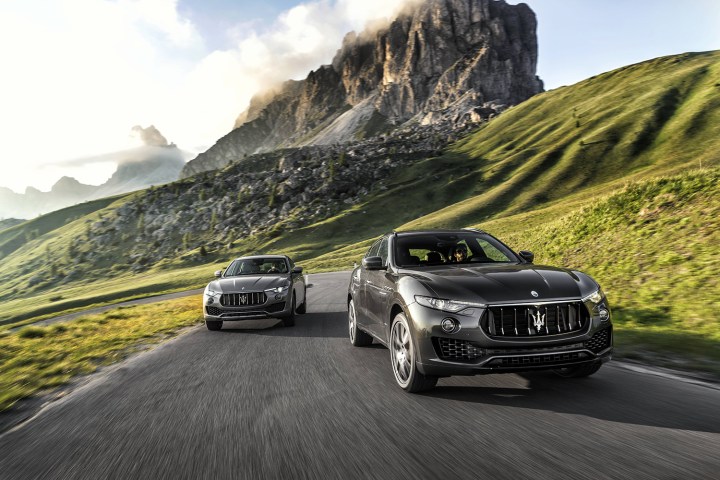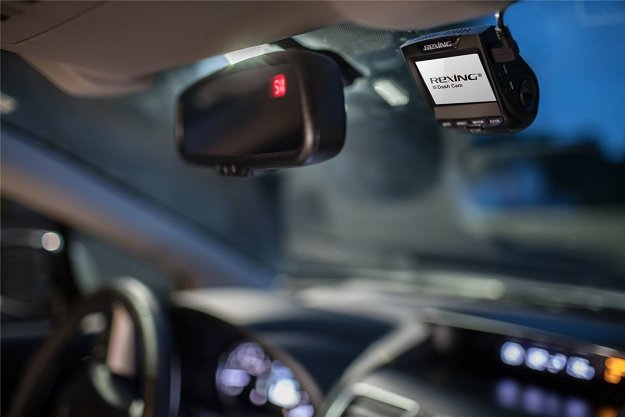
Alfa Romeo and Maserati are institutions of the Italian automotive industry. Both brands are over 100 years old, and they’ve gone through their fair shares of ups and downs over the past century, yet they’ve remained surprisingly faithful to their respective heritage. Their cars are quick, luxurious, and brimming with character but it’s the exterior design that first draws the eyes.
Digital Trends chatted with Klaus Busse, the mastermind in charge of the design center that draws cars for both brands, to get insight on what it takes to keep tradition alive while breaking new ground.
Digital Trends: Maserati is a brand with an immense amount of heritage. Do you feel restrained by it when you’re designing new models?
Klaus Busse: I don’t feel retrained; I feel responsibility. When you design a Maserati, you’re designing a future collector’s car. That in itself is a monstrosity of a responsibility that is on your shoulders.
When you design a Maserati, you’re designing a future collector’s car.
As a design team, we have identified what we believe is Maserati. Some of our competitors make cars with big air intakes and grilles. We try to express the power of the vehicle, its self-confidence, by using purely the trident logo and the shape of the grille. If you’re in a Quattroporte or a Ghibli, for example, when you’re at a light you don’t need to rev your engine to show how much power it makes because your car wears the trident. You’re driving a Maserati, that’s a supreme level of self-confidence you’re expressing. That’s what we try to honor. The body itself is more on the elegant side.
How can you evolve this design language?
We evolve it by staying true to two fundamental aspects. It’s really the trident that makes the face of a Maserati. And then, of course, you’ve got the rest of the car.

At auto shows people ask me if I see something that inspires me and I usually say “no.” Everything you see at a car show was done two or three years ago, it can’t possibly inspire me for something I want to do two or three years from now. The gap is just too big. For me, believe it or not, just sitting at a piazza in Turin drinking an espresso and looking at people and how they dress, Italian fashion, tells me much more about where we can take Maserati.
Italian design is not what they teach you in art school, like perfect symmetry. It’s something with much more character that can lead to confusion when observed individually but becomes amazing when perceived as an overall statement. This will continue to guide us with Maserati.
Italian design is not what they teach you in art school, like perfect symmetry.
Is there a specific type of car you’d like to design for Maserati?
Interesting question. I think the answer is “no.” Look at the Levante; you could say “Maserati did an SUV.” I’d say, “we did another Maserati which happens to have the space and the ride height of an SUV.” When we started the project, we had nothing to refer to. How do you do a Maserati SUV? We don’t. We just do what we do, give it a Maserati face, an elegant body, but instead of having a three-box design we did it almost like a hatchback. The most beautiful complement we’re getting is the fact no one asks, “why did Maserati do the Levante?” No one is criticizing us or surprised by it.

It’s been a successful recipe. It doesn’t matter what we work on in the future as long as we get the chance to continue this design philosophy.
You’re also responsible for Alfa Romeo design. What would you say characterizes the brand’s modern styling language?
Alfa Romeo was as adventurous as Maserati, if not more. Look at the classic cars like the Disco Volante, the 33 Stradale, and even the Montreal. There is not one golden recipe we can follow. I can tell you two things that, for me, are very important.

Number one, we have the very unique face. That’s something you don’t want to mess with. If you walk through an auto show, you can probably separate all faces into five categories, more or less. The beautiful thing is that [Alfa Romeo parent company] Fiat-Chrysler Automobiles owns two of those: Jeep and Alfa Romeo. The face will continue to play an important role the way it is.
I don’t think [Alfa Romeo] will go into super-flat surfaces anytime soon.
The second thing is that I don’t think we’re going to go into super-flat surfaces anytime soon. Italy is the land of sculpture, the land of Michelangelo, the land of beautiful shapes. That’s something I am very proud of. In the Centro Stile we have amazingly talented hand sculptors. We use computers like everyone else to accelerate a project and to simulate things but we are still very, very proud of the car’s hand-crafted nature.
Hand-wash a Giulia or a Stelvio and you’ll feel it. If you try that on other cars you’ll cut your hand. That’s great for them. It’s great that they celebrate a design that looks like it’s never been touched by a human hand, but we do the opposite.




